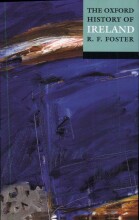The Norman Invasion and the Gaelic Recovery - The Irish Reaction
6 important questions on The Norman Invasion and the Gaelic Recovery - The Irish Reaction
Crisis resulting from the expansion of the Norman colony was postponed until mid-thirteenth century due to what?
Name the Irish kings whose long reigns last to mid thirteenth century?
Cathal Croibhdhearg O'Connor of Connacht 1195-1224
Adoh 0'Neil of Tir Eoghain (1198-1230)
Donough O'Brien of Thomond or North Munster (1210 -42)
Dermot McCarthy (1209-29) and his brother Cormac Fionn (1230-47) of South Munster or Desmond
Name 2 obligations the Irish kings had to meet in order to keep hold of their lands?
When the Irish kings did resort to arms what normally was their intention?
What were the Irish Kings denied
- They paid rent or tribute.
- Was responsive to the mandates of the English Kings or his Justiciar.
to preserve the status quo.
Security of succession.
- Higher grades + faster learning
- Never study anything twice
- 100% sure, 100% understanding
Who controlled the English government during the minority of Henry III? Who was he related to in Ireland and what land did he grant to family members in Ireland in 1226and what was the name of the family member?
What was the consequence of the forfeiture of Connacht in 1226?
By the late 13th Century and 14th Century the English no longer had a clear military superiority. This was partly due to three separate groups of mercenaries. Name three separate groups of mercenaries operating in Ireland and briefly describe them
Routes: Anglo-Norman mercenaries (known to the Irish as Seirseanaigh) . In larger groups and more heavily armed.
Scottish galloglass: Where the Routes were running out in Ulster and Connacht they were being replaced by troops from the western Isle of Scotland.
The question on the page originate from the summary of the following study material:
- A unique study and practice tool
- Never study anything twice again
- Get the grades you hope for
- 100% sure, 100% understanding
































